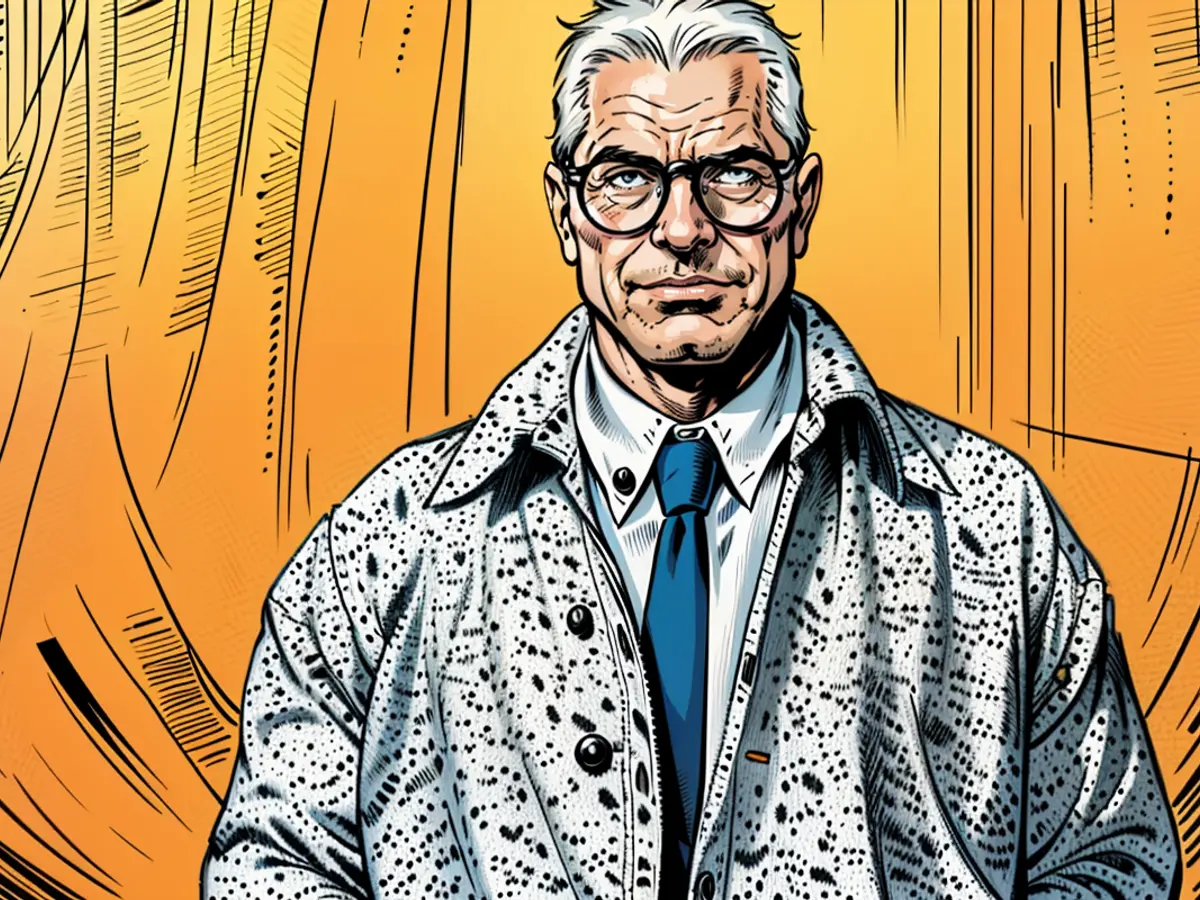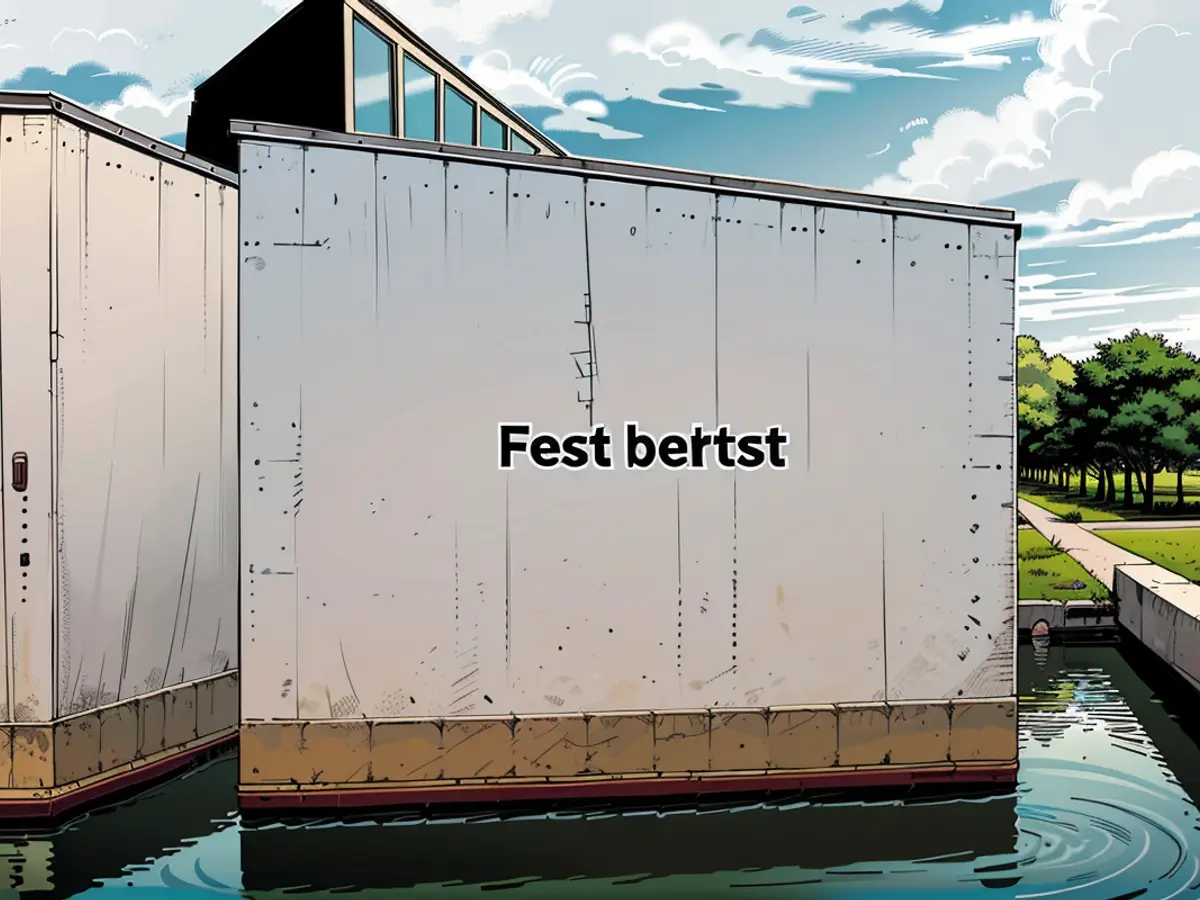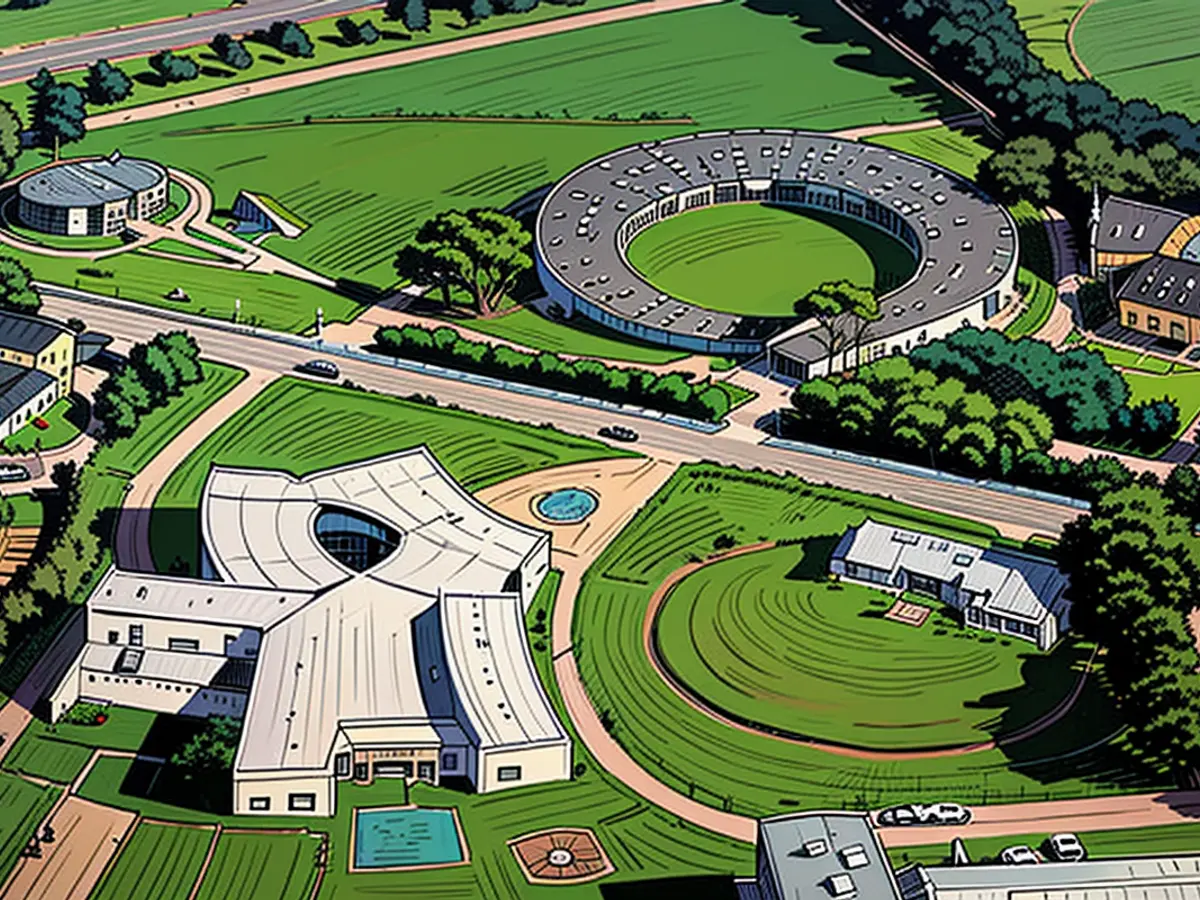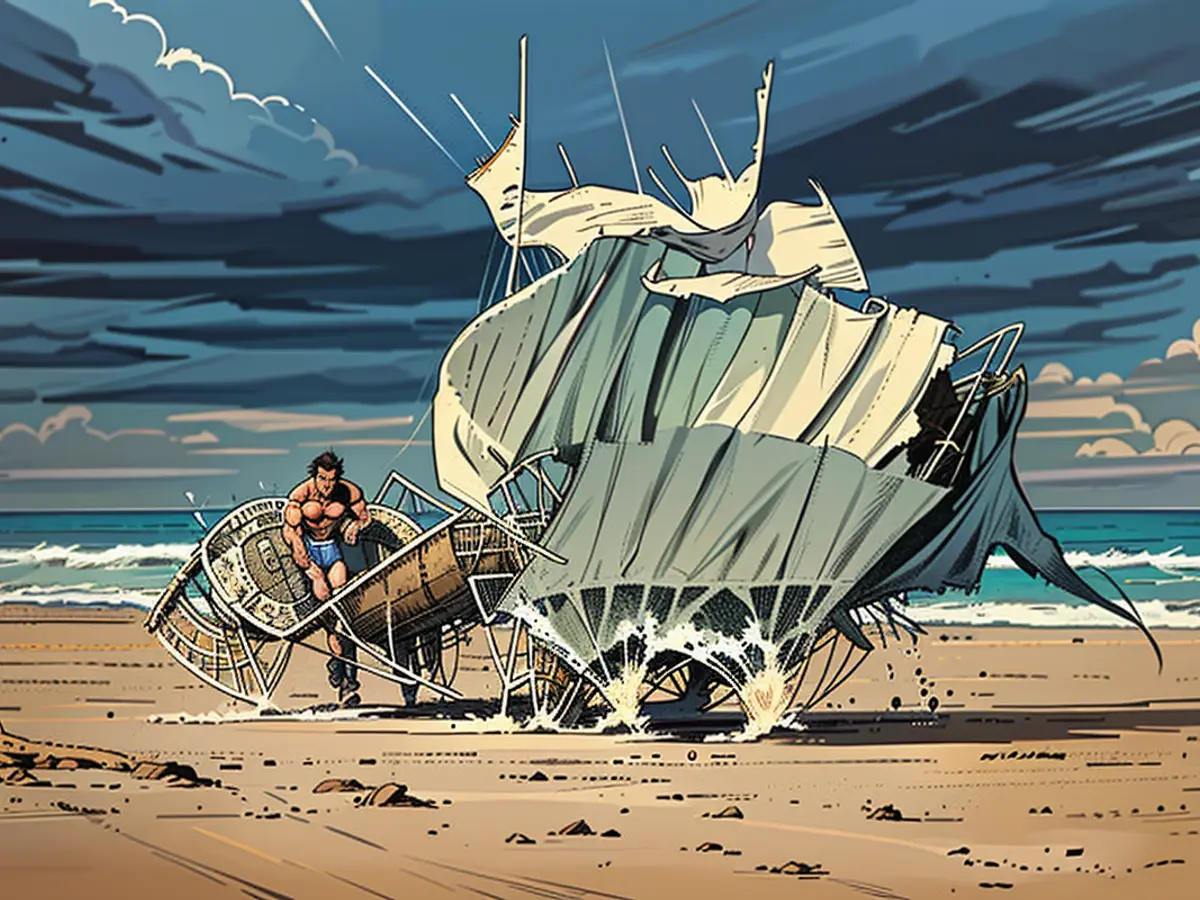What sounds does the Earth make?
The Danes invite again to the Socle du Monde Art Festival. For nine weeks, the public can participate in exhibitions and performances around the Heart-Museum. It attracts the largest Manzoni collection in the world and a special can.
Have you ever stood before a can of Artist's Shit (Artist's feces) and pondered what sounds the Earth makes or Styrofoam packaging as wall relief? Experience all this and much more on the Danish Jutland peninsula. In Herning, the Socle Du Monde Art Festival invites you to join, discover, and be amazed. Famous, international, and Danish artists and artistes populate eight exhibitions at five distinct locations.
The motto of the ninth edition is DO IT! Do it promises a lot - and, a little spoiler, delivers. Born accidentally and now legendary, this exhibition concept, which revolves around the Heart Museum, is the inspiration behind the festival. DO IT! was born in a café in Paris in 1993. There sat the star curator Hans Ulrich Obrist with two artist friends "and we had an idea about how to make exhibitions more sustainable," he told ntv.de.
How does this DO IT! work? The idea is as simple as it is revolutionary: Contemporary artists give instructions. With these instructions, anyone can create artworks anywhere with just a few hand gestures or a few materials. Since only these instruction manuals are sent to institutions, Hans Ulrich Obrist explains, there are no transportation or travel costs. DO IT! has been a guest in 160 museums worldwide since then. The possibilities for interpretation are numerous, no execution is the same, making it even more intriguing.
Yoko Ono listens to the planet
"I am constantly contacted from various sides, even from universities and cities. The invitation from Herning by Tijs Visser, who is responsible for the overall concept of the festival, was highly original and really new." No one had the idea before to lift DO IT! to the title and carry it further into the public sphere. Obrist was pleased with this. The result now ignites the imagination of visitors and visitors in and on the buildings, on the museum grounds, in Herning, and in a nearby forest. "It's fantastic," the 56-year-old continues, "when the public discovers these instructions while taking a walk in nature and then participates."

One of the 23 artists who created a prompt for Herning is Yoko Ono. The widow of John Lennon is long recognized as an acclaimed artist and exhibits worldwide. She invites you to the museum garden, for example, to ponder what sounds the Earth makes.
For Obrist, this is part of the big idea that we must learn to listen again. "I have to remind myself of that too," he says. Yoko Ono extends this listening to the planet. It's about regaining an empathetic connection to the Earth.
Project of a Textile Collector [
A project by a textile collector, Marlene Dumas, is also part of the festival. She invites visitors to create their own textile collages using the provided materials. The result is a collective artwork that will be displayed in the museum. Dumas's work often deals with identity and self-representation, making this project a perfect fit for the festival's theme of participation and engagement. The textile collages created by visitors will not only contribute to the artwork but also serve as a reminder of the collective power of creativity and the role of the audience in shaping the art world.
The heart of the festival is the Heart Museum. The white concrete of the building seems to be made of fabric, the roof is arched, reflecting in several water basins. The building is located on the grounds of a former textile factory. Herning was once a Danish stronghold for clothing production. Now, wind turbines are being built and textiles are being sold around the globe. Art collectors and patrons Aage Damgaard made his money with shirts until the 1970s. Textiles were the red thread of the festival two years ago. Now, it is all about a strong environmental consciousness.

What does this have to do with the aforementioned - pardon - Artist's Shit? It dates back to 1961. The Italian concept artist Piero Manzoni produced 90 cans "Artist's Shit" at that time. Allegedly, each can contains 30 grams of his feces. Absolutely airtight and odor-free packaged. He calculated the selling price based on the current gold price and his body weight. He saw it as a critique of consumer society. Unrestrained shopping behavior is under scrutiny now more than ever.
Manzoni's edition was not a sales hit, despite the fact that cans were popular at the time. Think of Andy Warhol's tomato soup can prints, which he produced in series and flooded the market with. Manzoni was one of the many artists that Damgaard invited to Jutland. For pay, Manzoni and Co. created large-format works for him. Among other things, the world's largest Manzoni collection came together.
The Damgaard textile factory closed in 1977, and the grounds were converted into a private museum. A spacious, round-shaped sculpture garden and a beautiful hedge maze invite visitors to linger around the clock. 18 years after the entrepreneur's death, in 2009, the new building named Heart was added. The festival provides magical art moments in Jutland every two years. "Socle du Mode is an archipelago of various exhibitions," Hans Ulrich Obrist praises. "It is polyphonic, as there are several curators." DO IT! passes well, as it is not prescribed how the show should look at the end. "Via Zoom," Obrist tells us, "ecology in the art world is important to me," we have been in a dialogue for months in a Ping-pong fashion.
Visit of the Beach Beasts
The crown jewel of all the artworks presented at the festival is sustainability, but also cultural exchange and diversity. There is much to discover, both new and familiar. Under the title "Everything is Wrong," the in-house artworks engage in dialogue with collections from all of Denmark. This is done by combining sewing patterns, 60s fashion, and everyday objects. Nothing is labeled. The public can guess what art is and what is not - everything is wrong or not. Manzoni's tin can is hidden among them, which has become coveted on auctions.

A balance act between art and junk goes by Theo Jansen. The Dutch artist and engineer builds complex, fully movable Strandbeesten out of yellow plastic bottles. He is in high demand internationally. Touching is explicitly allowed, as they should eventually come to life. They move somewhere between uncanny monster and delicate sculpture. Occasionally, the master comes by and activates his special creatures. Mostly, however, they wander alone through distant beaches, propelled by refined sails. Exposed to wind, weather, and humans.
A smaller version of these wind wanderers can be moved through the Heart Museum's entrance hall. A significantly larger model stands in the garden, it looks quite worn and used. The charismatic artist affectionately calls it tenderly a "dead beast".
Socle Du Monde Art Festival, DO IT! Until November 24,Bitten og Aage Damgaards Plads 2, 7400 Herning, Denmark
DO IT! Ideas to go - for home, vacation or anywhere else -here
During the Socle du Monde Art Festival in Denmark, visitors can participate in a project initiated by Yoko Ono, inviting them to consider the sounds the Earth makes in the museum garden. This aligns with Obrist's belief in re-learning empathetic connections with the Earth. Additionally, international and Danish artists contribute to eight exhibitions spread across five locations, promising a unique and engaging experience for festival attendees.
![Only Piero Manzoni himself knows whether his inheritance is really in there. Only Piero Manzoni himself knows whether his legacies are really inside [it].](https://cdn.aussiedlerbote.de/content/images/2024/07/21/399239/jpeg/4-3/1200/75/only-piero-manzoni-himself-knows-whether-his-inheritance-is-really-in-there.webp)






